Scarlet barbus: description, care, breeding and compatibility
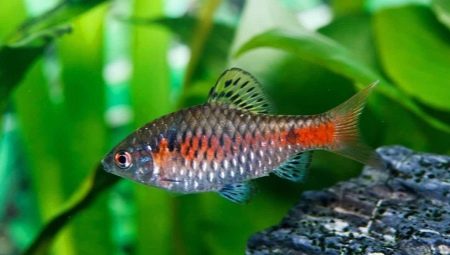
Barbs are active, cheerful and very maneuverable fish. With their outdoor games, they bring animation to the measured life of the aquarium. They are unpretentious in maintenance and care and are suitable for a novice aquarist. These fish live in flocks in nature, therefore, at home, they feel comfortable in the company of their own kind. Scarlet barbs are less popular than green or Sumatran barbs, but they also have all the prerequisites for widespread popularity.
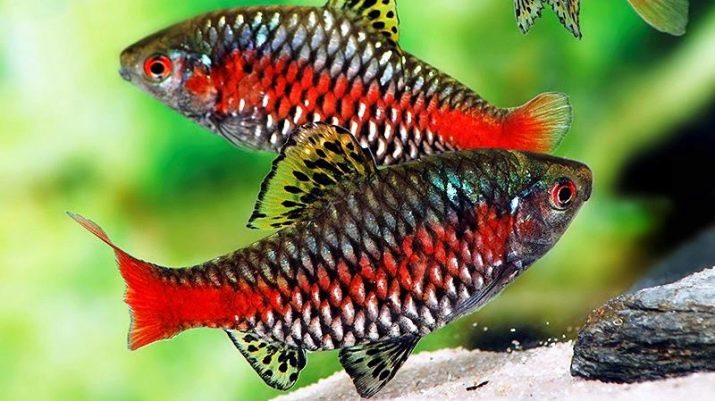
Origin
Scarlet barbus has the scientific name puntius ticto or barbus ticto, in Latin it sounds Pethia ticto. This type of fish belongs to the class of ray-finned, belongs to the order of carps and represents the carp family. The fish has another name - Odessa barbus. It appeared thanks to the Ukrainian seaside city, which initially began to breed these handsome men in the vastness of the former Soviet Union in the 70s of the last century.
It was brought to the European continent in 1903. It did not immediately become widely known, but over time it spread throughout Europe.
In the wild, tikto still live in India, Pakistan, Nepal, Laos, Burma and a number of countries in Southeast Asia. They have chosen quiet reservoirs and backwaters of freshwater rivers, the muddy bottom of which serves as a source of food for barbs. In their natural habitat, these representatives of cyprinids live in flocks of up to 20 individuals.


Appearance
The body length of a female scarlet barbus can be up to 10 cm, but this is the maximum figure, they usually reach 6-8 cm, the male, as a rule, is a couple of centimeters shorter.The body is slightly flattened and has pronounced scales with a silvery sheen. There are characteristic black dots near the head and tail. A bright red stripe runs along the entire body on the sides of the tiktu, thanks to which it got its name.
It is she who determines the difference between the female and the male. For female representatives, the stripe is almost invisible. In males, it begins on the head and smoothly passes into the tail. Their eyes are also red. Especially the strip becomes noticeable during spawning. The dorsal and pelvic fins of both sexes are orange with black blotches.
Life expectancy in nature is from 2 to 3 years, while barbs live in home maintenance and with proper care for 4 or even 5 years.
The longevity of the fish depends on many factors, including the quality of the food, and even the location of the aquarium.
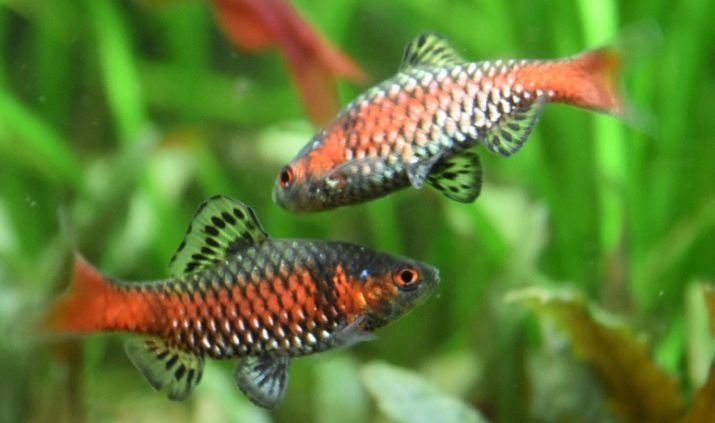
Terms and conditions of detention
A lover of aquarium fish, who decided to replenish his collection of pets with a couple of scarlet barbs, must know a few rules.
- These mobile fish need free space to play, so the minimum volume of the aquarium is 50 liters.
- Suitable indicators of water: temperature + 21 ... 25 ° С; hardness from 6 to 15 dH; acidity 6-7 pH.
- A mandatory factor is the presence of an aerator and filter in the aquarium. By the way, the latter can create an imitation of a light current, for barbs this will be an additional entertainment.
- And also a regular partial water change is necessary at least once a week.
- Tikto do not like direct sunlight; it is better to use a lamp for lighting.
- Their home must be equipped with stones, shells, algae and other decorations. They can be unnatural, most importantly, non-toxic and safe.
- When creating a cozy interior for the company of scarlet barbs, one should not forget about the availability of sufficient free space.
- There must be a lid on the aquarium, otherwise these nimble and nimble fish can escape.
- A couple of tikto will be bored together. The minimum number of these fish for home keeping is 6 individuals.

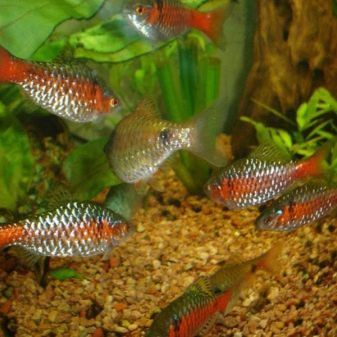
The nuances of feeding
In their natural habitat, these representatives of the aquatic world are almost omnivorous. At the bottom, covered with a layer of silt, they look for small insects, their larvae, or are content with plant particles. At the same time, plant food alternates with food of animal origin, providing the body with all the necessary nutrients.
It is a pleasure to feed a barbus at home. He is absolutely indiscriminate and eats everything that is given with appetite, be it frozen food, live or artificial. However, you need to make sure that the fish take 2 minutes to eat, and if there is still food left, it must be removed from the aquarium, since barbs are prone to overeating. You can periodically arrange fasting days.
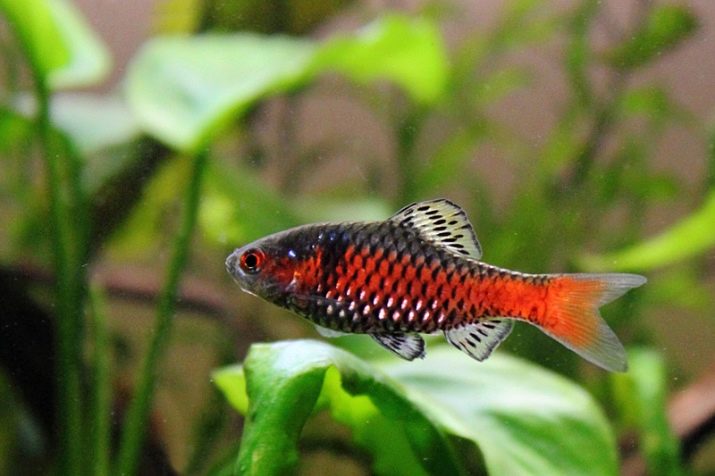
For feeding, it is advisable to use special feeders, then it is much more convenient to extract food particles from the water. You should also control that the barbs do not swallow air along with the food. It enters the intestines, thereby interfering with swimming and sinking to depth.
It is also important to combine different types of food, giving them in turn. It is not difficult to calculate Tikto's gastronomic addictions by observing how they eat this or that type of food. It should be remembered that it is better to underfeed these fish a little than to exceed the nutritional norm.
If you systematically feed the barbs at the same time in the morning and in the evening, then they develop a reflex, and they will never be hungry.

How to breed?
For the spawning period, two males and a female are transplanted into a separate all-glass aquarium with a volume of 10 liters for 1.5-2 weeks. There must be pebbles at the bottom, the water is slightly warmer than in the main container. It is important during breeding not to miss the moment when the female begins to spawn, and the males fertilize them. Barbs need to be removed in time so that they do not harm their own offspring, or pull on a special net. The number of eggs ranges from 100 to 150.
Unfertilized caviar turns white and is clearly visible; it must be removed from the spawning box. Babies appear in a day, but they are so small that you can hardly notice them. The fry will need food only on the third day of life, when they begin to swim. For this, an infusoria or a microworm is used. And also "live dust" or steeply boiled and mashed chicken egg yolk will do.
Scarlet barbs grow very quickly, the size of the monthly fry fluctuates around 1 cm. After three months, it is already possible to distinguish the sex. Young individuals acquire the ability to reproduce after 8 months.
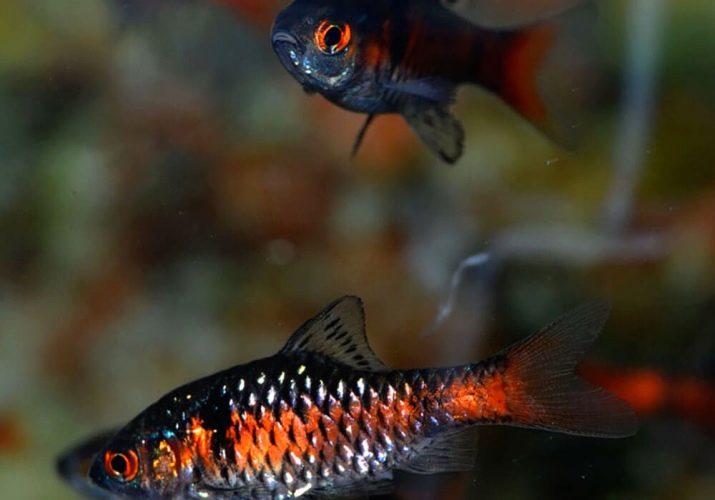
Acceptability with other species
The Odessa scarlet barbus is a peaceful creature, not prone to conflicts, but before you pick up neighbors for him in the aquarium, you need to take into account important points. First of all, you need to think about the varieties of barbs, such as:
- cherry;
- green;
- Sumatran;
- black Diamond;
- fiery;
- mossy;
- striped.
A company of these representatives of the carp family will look gorgeous against the background of the lush living vegetation of the aquarium. Tikto get along well with diamond tetras, Malabar zebrafish, congo, rainbows, labeos and mollies.
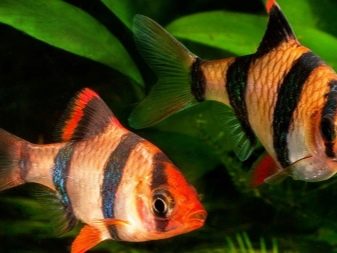
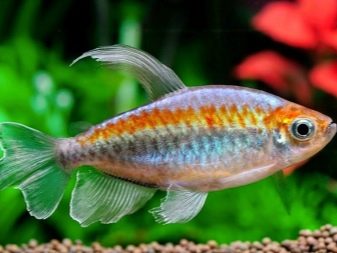
You should not add barbs to such fish:
- scalars;
- cockerels;
- gourami;
- goldfish;
- guppy.
Long veil fins fluttering in the water are perceived by the nimble barb as a kind of food. Therefore, such a neighborhood can end sadly for the owners of lush tails, this also applies to mustaches.
For the barbs themselves, the danger is posed by such predators as catfish, clarius or astronotus.
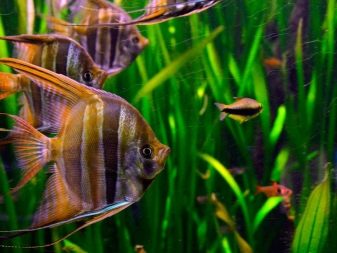

For more information about the features of these fish, see the next video.








